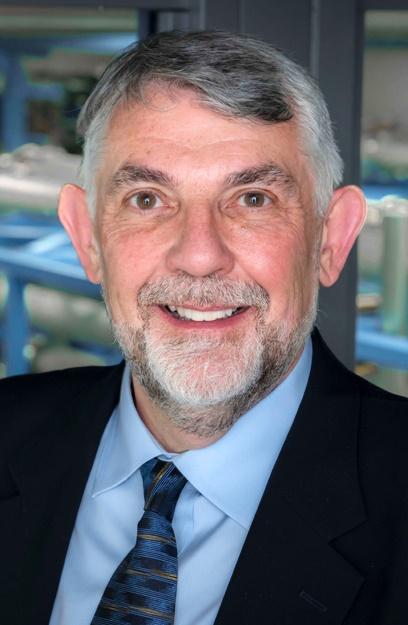Colloquia & Guest Speakers
Advances in Direct-Drive Fusion, High-Energy-Density Physics, and Laser Technologies at the Laboratory for Laser Energetics
Christopher Deeney, Director of the Laboratory for Laser Energetics, University of Rochester
Monday, February 13, 2023
3:30 p.m.
In-person in Goergen 101 and Zoom
Zoom Information
Zoom:https://rochester.zoom.us/j/95276747247?pwd=WlBieEFIWUg2N0Y3bDFsa25KcFZCQT09
Meeting ID: 952 7674 7247
Passcode: 964579
Talk created in collaboration with: V. Goncharov, R. Betti, J. Zuegel, S. Regan, G. Collins, S. Morse, C. Sorce, D. Froula, M. Wei, and the LLE Team.
Abstract
The last five years have seen remarkable advances in four key missions of the Laboratory for Laser Energetics (LLE): fusion, high-energy-density physics (HEDP), laser technology, and education. By integrating theory and computation, statistical modeling, three-dimensional diagnostic methods, and improved target fabrication and diagnostics, directly driven implosions on the 30-kJ Omega Laser Facility have produced record neutron yields (>3e14) and hot spot pressures in deuterium-tritium implosions of 80Gbar.
The recent achievement of target gain >1 at the National Ignition Facility proves the physics of hotspot ignition, while the research on Omega is showing the promise of coupling significant energy to capsules with efficiencies five times greater than on the NIF. A key part of the enhanced coupling comes from a deeper understanding of laser-plasma interactions and instabilities. The community is moving to a more predictive capability for these physics topics and generating fundamental measurements (i.e., directly measuring the electron distribution functions). A key conclusion of this research is that future laser drivers will require increased bandwidth, >3% versus the <1% on Omega, to control cross-beam energy transfer and other instabilities.
At LLE we are developing a fourth-generation laser prototype, FLUX, to demonstrate that enhanced bandwidth does provide the required control. FLUX is based on a series of laser development activities on our MTW laser and target physics test bed. The OMEGA Extended Performance (EP) facility also continues to advance our understanding many of our laser-plasma interaction experiments were conducted on OMEGA EP, EP is a workhorse for our HEDP research. Recent experiments have advanced an understanding of materials and pressures and densities relevant to planets and stars. For example, experiments on OMEGA EP have measured melt curves of magnesium oxide at pressures up to 1 TPa. Other experiments have measured the Hugoniot of silicon up to 2 TPa and deuterium to 1 TPa. These latter measurements are also relevant to the formation of stars and for inertial confinement fusion (ICF). They also represent the achievement of pressures 50 times greater than those achieved in the pioneering gas gun work of Nellis in 1995.
Achievements in ICF and HEDP are enabled through experiments in diagnostics, fundamental understanding of laser-plasma interactions and precision control, and technology advances in fundamental laser technology. OMEGA and OMEGA EP have continued to improve laser operations and performance. In addition, smaller scale lasers such as MTW have enabled the production of 7 J, 20 femtosecond pulses to define a path to 10 to 100 PW lasers, to study the physics discussed in the Bright Light Initiative.
In this talk, we will discuss progress in the LLE program and highlight pioneering achievements, many of which are led by our excellent graduate students.
This material is based upon work supported by the Department of Energy National Nuclear Security Administration under Award Number DE-NA0003856, the University of Rochester, and the New York State Energy Research and Development Authority.
This report was prepared as an account of work sponsored by an agency of the U.S. Government. Neither the U.S. Government nor any agency thereof, nor any of their employees, makes any warranty, express or implied, or assumes any legal liability or responsibility for the accuracy, completeness, or usefulness of any information, apparatus, product, or process disclosed, or represents that its use would not infringe privately owned rights. Reference herein to any specific commercial product, process, or service by trade name, trademark, manufacturer, or otherwise does not necessarily constitute or imply its endorsement, recommendation, or favoring by the U.S. Government or any agency thereof. The views and opinions of authors expressed herein do not necessarily state or reflect those of the U.S. Government or any agency thereof.
Biography

Christopher Deeney, Ph.D., is the fifth Director of the Laboratory for Laser Energetics. He previously served as Chief Science and Technology Officer, National Security Directorate, at Pacific Northwest National Laboratory (PNNL), in addition to his years of experience at the Nevada National Security Site as a Vice President and Chief Technology Officer. He managed the almost $2 billion research and development portfolio for Department of Energy’s National Nuclear Security Administration. As a researcher and senior manager, he worked at Sandia National Laboratories. Chris is known as a scientific and innovation leader with direct experience running complex operations, especially in high-energy-density physics. In his role as Director, Deeney manages the Laboratory’s senior management staff, providing executive-level guidance and direction. He participates in the day-to-day management of the Laboratory; fosters successful relationships among University Senior Leadership; federal, local, and state government officials; peer organizations and laboratories; Department of Energy; National Science Foundation; Department of Defense; private industry; and the local community. He participates in ongoing University strategy development. At LLE, he develops strategies with an emphasis on bringing high-quality science and technology solutions to address key challenges in fusion, high-energy-density physics, and laser technologies while maintaining effective operations of the academia’s largest lasers and educating future generations of scientists and engineers. Chris received his Ph.D. in Plasma Physics from the Imperial College in the United Kingdom. He is a Fellow of the American Physical Society and the Institute of Electrical and Electronic Engineers.
